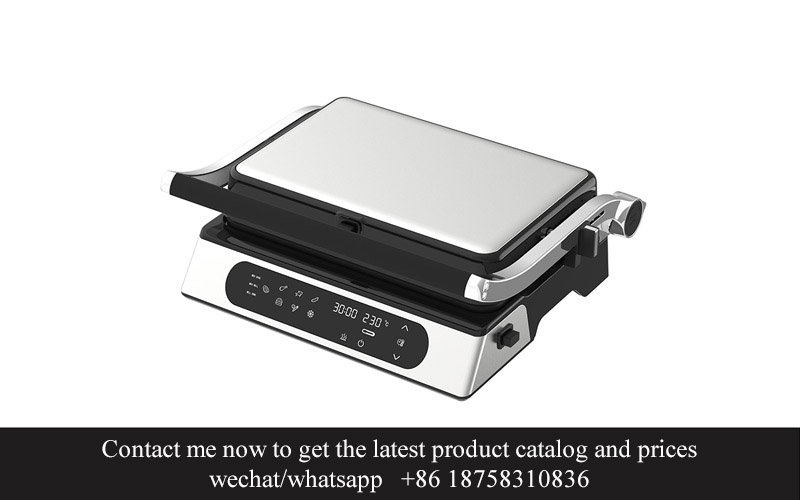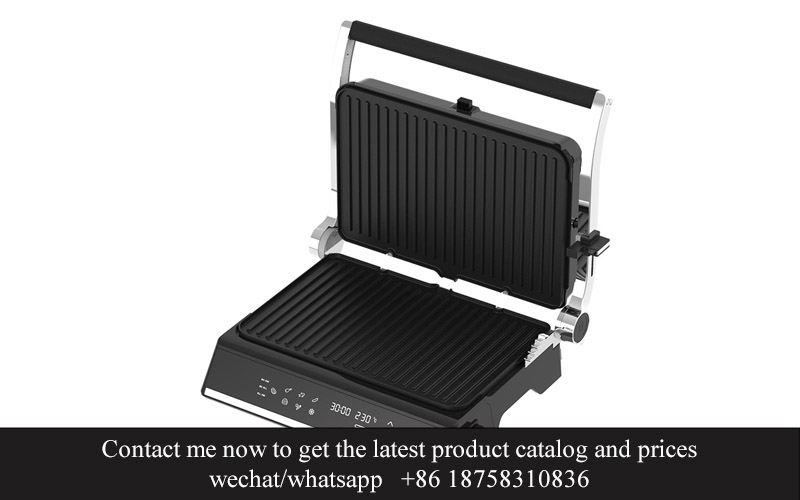Address
304 North Cardinal
St. Dorchester Center, MA 02124
Work Hours
Monday to Friday: 7AM - 7PM
Weekend: 10AM - 5PM
Address
304 North Cardinal
St. Dorchester Center, MA 02124
Work Hours
Monday to Friday: 7AM - 7PM
Weekend: 10AM - 5PM

In a world where technology and convenience reign supreme, the small appliance market has seen a surge in demand. As consumers seek out innovative solutions for their everyday needs, the drop shipping model from China has emerged as a compelling opportunity for entrepreneurs and businesses alike. This approach offers a unique blend of cost-effectiveness, access to a vast array of products, and the potential for significant growth. Let’s explore the ins and outs of this burgeoning industry, from navigating the complex landscape of Chinese suppliers to the art of marketing and the logistics that keep it all running smoothly.
In recent years, the small appliance market has experienced a remarkable surge in popularity, transforming the way consumers approach kitchen tasks and everyday living. This rise can be attributed to several key factors that have collectively reshaped the landscape of home gadgets.
The convenience and efficiency that small appliances offer have become increasingly appealing to today’s busy consumers. From single-serve coffee makers to air fryers, these compact devices have found their way into kitchens around the world, simplifying cooking and baking processes. The ability to quickly prepare a variety of dishes has sparked a wave of innovation, with manufacturers constantly pushing the boundaries of what these gadgets can do.
One of the main drivers behind this growth is the evolving lifestyle of the modern consumer. With longer work hours and a desire for convenience, many people are looking for ways to save time without compromising on quality. Small appliances fill this gap by providing quick and easy solutions to everyday challenges. For instance, a rice cooker can produce a perfect meal in minutes, while a slow cooker allows for hands-off cooking over an extended period.
Moreover, the rise of health-conscious consumers has fueled the demand for specialized appliances. Devices like high-speed blenders and spiralizers have gained popularity as they enable users to create nutritious, homemade meals. The market has seen a shift towards appliances that not only save time but also promote healthy eating habits.
Another significant factor is the influence of social media and online content creators. The rise of influencers and DIY chefs has made cooking and kitchen gadgets a trending topic. These platforms have showcased the versatility and creativity that small appliances can bring to the kitchen, inspiring consumers to explore new products and incorporate them into their daily routines.
The accessibility of information and the ease of online shopping have also played a crucial role. Consumers can now research products, read reviews, and make purchases with just a few clicks, eliminating the need for physical store visits. This has expanded the market reach for small appliance brands and has allowed for niche products to gain traction.
The small appliance market has also been influenced by technological advancements. Smart appliances, equipped with connectivity and IoT capabilities, have become more common. These devices can be controlled remotely, offer personalized settings, and provide data analytics, which appeals to tech-savvy consumers looking for smart home solutions.
In terms of product categories, there has been a notable expansion. While coffee makers and toasters remain staples, the market has expanded to include air fryers, sous-vide machines, and even kitchen robots. Each new product promises to make cooking more accessible, efficient, and enjoyable, further driving the demand.
The growth of the small appliance market is not without its challenges. Competition is fierce, and consumers are becoming more discerning about the quality and functionality of the products they purchase. Brands that can innovate, differentiate themselves, and provide exceptional value will be well-positioned to capitalize on this trend.
In conclusion, the rise of small appliances is a testament to the changing needs and preferences of consumers. As long as manufacturers continue to innovate and adapt to these evolving demands, the small appliance market is poised to maintain its upward trajectory.

In the ever-evolving e-commerce landscape, drop shipping from China has emerged as a powerful strategy for entrepreneurs and small businesses looking to capitalize on the burgeoning small appliance market. This approach offers a multitude of advantages that can significantly enhance the profitability and scalability of online retail ventures.
Cost-Effective Production and LaborThe manufacturing industry in China is renowned for its efficiency and competitive pricing. By sourcing small appliances from Chinese suppliers, businesses can benefit from low production costs, which often include labor expenses. This cost-effectiveness allows retailers to offer competitive prices to customers, maintaining profit margins even after accounting for shipping and handling.
Vast Product Range and VarietyChina is a hub for a vast array of small appliances, from coffee makers and blenders to air fryers and electric toothbrushes. This extensive range allows drop shippers to cater to a diverse set of customer needs and preferences. With such variety, it’s easier to find niche products that can attract specific consumer segments and drive sales.
Fast Production and Delivery TimesChinese manufacturers are known for their quick turnaround times. This agility is particularly beneficial for drop shipping, as it means products can be produced and shipped swiftly, often with shorter lead times than in other countries. This can be a significant competitive edge, especially for time-sensitive products.
Access to High-Quality ComponentsDespite the low production costs, Chinese manufacturers often use high-quality materials and components. This ensures that the small appliances sold through drop shipping are not only affordable but also durable and reliable, enhancing customer satisfaction and repeat business.
Established Logistics InfrastructureChina boasts a robust logistics network, both domestically and internationally. This infrastructure ensures that products are transported efficiently and securely, minimizing the risk of damage or delays. With established shipping partners, drop shippers can offer reliable delivery services to customers worldwide.
Language and Cultural ProficiencyChinese suppliers are typically fluent in English and other languages, making communication and business transactions seamless. This proficiency in cross-cultural communication can facilitate smoother negotiations, contract drafting, and ongoing customer support.
Customization and Private Label OpportunitiesDrop shippers can take advantage of customization and private labeling services offered by many Chinese manufacturers. This allows retailers to create unique product lines and brand their offerings, differentiating themselves from competitors and potentially commanding higher profit margins.
Market Trends and Quick AdaptationChina’s manufacturing sector is adept at responding to market trends. By working with Chinese suppliers, drop shippers can stay ahead of the curve by quickly adapting to new consumer demands and incorporating the latest innovations into their product offerings.
Reduced Inventory RiskOne of the most significant advantages of drop shipping is the elimination of inventory management. Retailers do not need to hold stock, which means there’s no risk of overstocking or dealing with excess inventory. This approach allows businesses to scale operations without the financial burden of large inventory investments.
Scalability and FlexibilityDrop shipping from China offers scalability and flexibility. As demand increases, retailers can easily increase order volumes without the need for additional investment in storage space or labor. This scalability is particularly attractive for entrepreneurs who wish to grow their business without significant upfront capital investment.
Competitive Pricing and Bulk DiscountsMany Chinese manufacturers are willing to offer bulk discounts, which can be passed on to the end consumer, making the products even more appealing. This competitive pricing can help attract a larger customer base and drive sales.
Continuous InnovationThe Chinese market is characterized by a constant stream of new product innovations. Drop shippers benefit from this continuous innovation, ensuring that their product catalogs remain fresh and appealing to customers who are always looking for the latest and greatest in small appliances.
In conclusion, drop shipping from China presents a compelling opportunity for those looking to enter or expand within the small appliance market. The combination of cost-effective production, vast product variety, and a robust logistics network makes this strategy not just viable but highly advantageous for businesses seeking growth and success in the global e-commerce landscape.

In the vast landscape of global e-commerce, Chinese suppliers have become a cornerstone for many businesses looking to drop ship small appliances. This deep dive into the market reveals a world of opportunities, challenges, and strategic considerations.
The Vast Array of Products AvailableChinese suppliers offer an incredible variety of small appliances, from simple kitchen gadgets to high-tech devices. From blender to air fryer, the selection is vast and diverse, catering to different market segments and consumer preferences.
Competitive PricingOne of the primary attractions of sourcing from Chinese suppliers is the competitive pricing. The scale of production in China often results in lower costs per unit, allowing drop shippers to offer competitive prices to their customers while maintaining healthy profit margins.
Quality ControlNavigating the market means understanding quality control. While many Chinese suppliers offer high-quality products, it’s essential to establish a stringent quality control process. This might involve working closely with suppliers, conducting thorough inspections, and ensuring compliance with international standards.
Supplier ReliabilityBuilding trust with suppliers is key. Look for suppliers with a proven track record, positive reviews, and a history of reliable delivery. It’s also beneficial to establish direct lines of communication, ensuring you can quickly address any issues that may arise.
Customization OpportunitiesThe Chinese market is known for its adaptability, and this extends to the ability to customize products. This can be a game-changer for drop shippers looking to differentiate their offerings, whether it’s through branded packaging, unique designs, or additional features.
Sustainability and Ethical ConsiderationsIn recent years, sustainability and ethical practices have become increasingly important. When selecting Chinese suppliers, consider their approach to environmental responsibility and labor rights. This not only aligns with consumer values but can also be a competitive advantage.
Language and Cultural BarriersCommunication is a critical factor when dealing with international suppliers. While many Chinese suppliers speak English, it’s important to have someone on your team who can navigate language and cultural differences to ensure smooth transactions.
Payment Terms and SecurityUnderstanding the payment terms and ensuring secure transactions is crucial. Look for suppliers who offer multiple payment options and provide secure platforms for conducting business. This might include payment gateways that are well-known and trusted internationally.
Logistics and ShippingThe logistics of shipping can be complex, especially when dealing with international suppliers. It’s vital to establish clear shipping policies, understand delivery times, and consider the costs associated with shipping and handling. Look for suppliers who offer efficient shipping solutions and can provide tracking information.
Market Research and TrendsStay informed about market trends and consumer demands. This means regularly researching the market to understand what’s popular, what’s not, and what new products are on the horizon. Tailoring your offerings to current trends can help you stay relevant and competitive.
Customer Feedback and AdaptationLastly, listen to customer feedback. The market is dynamic, and customer preferences can change rapidly. Be prepared to adapt your product offerings based on what your customers are saying and what the market is indicating.
In essence, navigating the market of Chinese suppliers for drop shipping small appliances requires a combination of market knowledge, supplier vetting, and strategic planning. By focusing on these areas, drop shippers can harness the power of Chinese suppliers to offer a wide range of products to their customers while managing risks and ensuring a successful business venture.

In the ever-evolving landscape of the kitchen appliance industry, innovation is key to standing out in a crowded market. Here are some ways to innovate with unique product ideas:
Embrace Eco-Friendly DesignsCustomers are increasingly conscious of environmental impact. By creating small appliances that are energy-efficient, made from sustainable materials, or designed for recycling, you can tap into a growing market segment that values eco-conscious products.
Integrate Smart TechnologyThe integration of smart technology into kitchen appliances is not just a trend; it’s a necessity. Think beyond the usual smart ovens and fridges; consider smart kettles that can be controlled via an app, or toasters that can adjust settings based on the type of bread being used.
Focus on Health and WellnessHealth is a top priority for many consumers, which means there’s a market for appliances that cater to wellness. This could include air purifiers for the kitchen, water filters for pitchers, or even countertop juicers that are designed for ease of use and cleanup.
Create Multi-Functional AppliancesWho said appliances had to be single-purpose? Combining functions can save space and appeal to consumers looking for practical solutions. For instance, a blender that can also serve as a food processor or a coffee maker that doubles as a milk frother.
Personalize with Customization OptionsOffering customization can make your products stand out. Customers might appreciate the ability to choose colors, materials, or even specific features. This could be as simple as a line of toasters with interchangeable toaster plates in different shapes and sizes.
Focus on AestheticsWhile functionality is crucial, aesthetics shouldn’t be overlooked. Design appliances that not only perform well but also look good in any kitchen. This could involve sleek, minimalist designs or appliances that come in a range of colors to match various kitchen decors.
Utilize Social Media for InspirationSocial media is a treasure trove of ideas. By following trends on platforms like Instagram, Pinterest, and TikTok, you can stay updated on what consumers are interested in and looking for in their kitchen appliances.
Incorporate Interactive ElementsInteractive appliances can make cooking more engaging. Imagine a countertop oven that displays cooking times and temperatures on its surface or a rice cooker that can be programmed through a tablet or smartphone.
Explore Unique MaterialsThink outside the box when it comes to materials. Using materials that are not traditionally associated with kitchen appliances can create a unique selling point. For example, a countertop blender made from bamboo or a refrigerator with a wood-grain finish.
Focus on SafetySafety features can be a major selling point, especially for families. Consider appliances with child locks, non-slip bases, or emergency shut-off features. By prioritizing safety, you can appeal to a wide range of consumers.
By staying attuned to consumer needs, leveraging technology, and thinking creatively, you can develop unique product ideas that not only meet the demands of the market but also set your brand apart. Remember, innovation is not just about creating something new; it’s about creating something that resonates with people and improves their lives.

In the ever-evolving landscape of the kitchen appliance industry, staying ahead of the curve is crucial. Here’s a look at some key industry trends and the data that supports them, providing a glimpse into the future of kitchen technology.
The rise of smart appliances has been a game-changer. From refrigerators that can order groceries to ovens that can cook multiple dishes simultaneously, smart technology is becoming more integrated into everyday life. According to a report by Grand View Research, the smart kitchen appliances market is expected to reach a value of $32.3 billion by 2025, with a compound annual growth rate (CAGR) of 9.4% from 2018 to 2025.
Energy efficiency is another trend that’s gaining traction. As consumers become more environmentally conscious, there’s a growing demand for appliances that consume less energy. The U.S. Energy Information Administration (EIA) reports that energy-efficient appliances can save consumers an average of $200 to $400 per year on their utility bills. This shift is not only beneficial for the environment but also for the wallets of consumers.
Customization is also on the rise, with consumers seeking appliances that cater to their specific needs and preferences. From countertop ovens that come in a variety of colors to dishwashers with customizable cycles, the market is responding to the desire for personalization. A study by the Consumer Technology Association (CTA) found that 68% of consumers are interested in personalized technology products, indicating a significant opportunity for appliance manufacturers.
Health and wellness are driving the demand for kitchen appliances that not only make life easier but also promote a healthier lifestyle. For example, high-speed blenders that can make smoothies in seconds or air fryers that offer a healthier alternative to deep-frying are becoming increasingly popular. The Global Market Insights predicts that the global health and wellness kitchen appliances market will reach $27.6 billion by 2025, with a CAGR of 6.2%.
Sustainability is a key factor in the appliance industry, with manufacturers looking for ways to reduce their environmental impact. This includes using recycled materials, designing products for longevity, and implementing energy-efficient manufacturing processes. A report by the World Wildlife Fund (WWF) highlights that sustainable appliances can reduce carbon emissions by up to 50% over their lifetime.
The Internet of Things (IoT) is also playing a significant role in the appliance industry. Appliances that can connect to the internet and be controlled remotely are becoming more common. According to a study by Parks Associates, 38% of consumers with smart home technology say they are interested in buying more smart appliances. This interconnectedness is not only convenient but also allows for better energy management and predictive maintenance.
Innovation in materials is another trend that’s shaping the appliance industry. For instance, the use of stainless steel has been a staple for years, but now we’re seeing the emergence of new materials like glass, ceramic, and even recycled plastics. These materials not only offer aesthetic appeal but also functional benefits, such as being easier to clean or more durable.
Lastly, the rise of online shopping has had a profound impact on the appliance industry. Consumers are increasingly turning to e-commerce platforms to purchase their kitchen appliances, which has led to a shift in how manufacturers market and distribute their products. According to a report by Statista, the online kitchen appliance market is expected to grow at a CAGR of 7.4% from 2019 to 2024.
In conclusion, the appliance industry is undergoing a transformation, driven by a variety of factors including smart technology, energy efficiency, customization, health and wellness, sustainability, IoT, innovative materials, and online shopping. By staying informed about these trends and analyzing the data, manufacturers and retailers can better position themselves to meet the evolving needs of consumers and capture market opportunities.

Navigating the digital aisles of online marketplaces, the art of marketing small appliances online hinges on a blend of creativity, strategy, and understanding the pulse of consumer desires. Here’s a deep dive into the tactics that can turn a small appliance into a bestseller.
Understanding Your Audience- Delve into the profiles of your target demographic, identifying their needs, preferences, and pain points.- Tailor your messaging to resonate with these characteristics, focusing on how your appliance can solve specific problems or enhance daily life.
Optimizing Online Listings- Craft compelling product descriptions that highlight unique features and benefits.- Use high-quality images and videos to showcase the appliance in action, emphasizing design and functionality.- Incorporate relevant keywords to improve search engine optimization (SEO) and make your listings more discoverable.
Leveraging Social Media- Establish a strong presence on platforms where your audience is most active.- Share engaging content that educates, entertains, and encourages interaction.- Use targeted ads to reach potential customers with tailored messages and offers.
Building Trust and Authority- Share customer testimonials and reviews to build credibility.- Offer a wealth of information through blog posts, infographics, and guides that position your brand as an expert in small appliances.- Engage in community discussions and answer questions to establish rapport with potential buyers.
Email Marketing and Newsletters- Develop an email marketing strategy to keep subscribers informed about new products, promotions, and content.- Segment your email list to send personalized messages based on customer behavior and preferences.- Use compelling subject lines and content to encourage opens, clicks, and conversions.
Collaborations and Influencer Partnerships- Partner with influencers who align with your brand values and can authentically promote your products.- Offer them exclusive deals or early access to new releases to create buzz and credibility.- Monitor the impact of these partnerships with analytics to refine future collaborations.
Utilizing Paid Advertising- Invest in paid advertising on search engines, social media, and other online platforms.- A/B test different ad copy, images, and calls-to-action to optimize conversion rates.- Set clear goals and budgets to ensure your advertising efforts are yielding a positive return on investment (ROI).
Customer Retention and Loyalty Programs- Implement loyalty programs that reward repeat customers with discounts, freebies, or exclusive content.- Encourage customer reviews and feedback to improve products and services.- Stay engaged with your customers through regular updates, special offers, and thoughtful communication.
SEO and Content Strategy- Continuously optimize your website and product listings for search engines to improve organic traffic.- Create valuable content that drives traffic, such as how-to guides, comparison charts, and product reviews.- Monitor keyword trends and adjust your content strategy accordingly to stay relevant.
By mastering these marketing techniques, small appliance sellers can effectively capture the attention of online consumers, build a loyal customer base, and ultimately drive sales. It’s a dynamic landscape that requires a flexible and responsive approach to stay ahead in the competitive world of e-commerce.

Navigating the complexities of logistics and compliance when drop shipping small appliances from China requires a keen understanding of the supply chain. Here’s a closer look at the intricacies involved:
The Importance of Reliable Shipping Partners- Exploring the significance of partnering with trusted shipping providers- How reliable partners can ensure timely delivery and customer satisfaction
Customs and Tariffs: Navigating International Barriers- Delving into the world of customs regulations and tariffs- Understanding the impact on product pricing and delivery timelines
The Role of Incoterms in Logistics- A breakdown of Incoterms (International Commercial Terms) and their application- How Incoterms help clarify responsibilities and costs between buyer and seller
Packaging: A Key Factor in Successful Logistics- The critical role of packaging in protecting goods during transit- Discussing eco-friendly and cost-effective packaging solutions
The Impact of Distance on Logistics- Addressing the challenges of long-distance shipping from China- Strategies to minimize transit times and costs
Cross-Docking and Inventory Management- Exploring the concept of cross-docking and its benefits in logistics- The importance of efficient inventory management to avoid stockouts or overstocking
Dealing with Returns and Damages- Addressing the issue of returns and product damages in transit- How to handle these situations and maintain customer satisfaction
Compliance with International Safety Standards- Ensuring compliance with international safety standards for small appliances- The importance of certifications and testing for market entry
The Use of Technology in Logistics- How technology, such as track-and-trace systems, enhances logistics operations- Benefits of real-time tracking for both the seller and the buyer
Dealing with Unexpected Events- Preparing for and responding to unexpected events like natural disasters or political instability- Contingency planning to mitigate risks and maintain operations
Sustainability in Logistics- The growing trend of sustainability in logistics and its relevance to small appliance shipping- How eco-friendly practices can improve brand reputation and reduce environmental impact
In conclusion, the logistics aspect of drop shipping small appliances from China is multifaceted, requiring a careful balance between cost, speed, and compliance. By understanding and managing these elements, businesses can ensure a smooth supply chain and satisfied customers.

Navigating the complexities of customer service in the small appliance drop shipping business is crucial for building trust and fostering long-term customer retention. Here’s a closer look at how to excel in this critical area:
Understanding Customer Needs- Recognizing that customer needs are diverse and ever-evolving- Tailoring services to meet these varying demands, from product inquiries to after-sales support
Creating a Responsive Support System- Implementing a responsive customer service system, whether through live chat, email, or phone- Ensuring quick response times and effective communication channels
Personalizing Interactions- Personalizing each customer interaction to make them feel valued- Using customer data to provide a more personalized shopping experience
Handling Complaints and Issues- Establishing a clear process for handling customer complaints and issues- Approaching problems with a solution-oriented mindset and a commitment to resolution
Leveraging Feedback for Improvement- Actively seeking customer feedback and using it to improve services- Showing customers that their input is genuinely valued and leads to changes
Building Long-Term Relationships- Focusing on building long-term relationships rather than just making a sale- Keeping in touch with customers post-purchase to ensure satisfaction
Training Customer Service Teams- Investing in training for customer service teams to ensure they are knowledgeable and empathetic- Equipping them with the tools and resources needed to handle complex situations
Implementing a Referral Program- Encouraging satisfied customers to refer friends and family by offering incentives- Using word-of-mouth as a powerful tool for customer retention
Offering Post-Purchase Support- Providing comprehensive post-purchase support, including installation guides and troubleshooting tips- Ensuring customers feel supported throughout the entire product lifecycle
Using Social Media to Engage- Engaging with customers on social media platforms to build a community around the brand- Addressing customer queries and concerns in a public space to demonstrate transparency
Monitoring Customer Satisfaction- Regularly monitoring customer satisfaction through surveys and feedback tools- Using this data to make informed decisions and improvements to the customer service process
Incorporating AI and Automation- Utilizing AI and automation tools to handle routine inquiries and free up human agents for more complex tasks- Balancing efficiency with the human touch in customer service interactions
Creating a Customer-Centric Culture- Cultivating a company culture that prioritizes customer satisfaction and support- Ensuring that every employee understands the importance of customer service in the overall business strategy
By focusing on these aspects, small appliance drop shipping businesses can not only build trust with their customers but also create a loyal customer base that supports long-term growth and success.

In the world of e-commerce, drop shipping has emerged as a popular business model, especially in the realm of small appliance sales. Success stories from drop shipping ventures offer valuable insights into what works and how to navigate the challenges. Here are a few case studies that highlight the triumphs of entrepreneurs who’ve made it big in the drop shipping space.
A Tale of a Kitchen Gadgets EmpireAn entrepreneur started with a small inventory of kitchen gadgets, leveraging drop shipping to expand their product range. By focusing on niche markets and engaging with customers through social media, they managed to build a loyal customer base. Their strategy included offering competitive pricing and exceptional customer service, which led to rapid growth and a thriving online business.
The Rise of the Smart Home Appliance SpecialistAnother entrepreneur capitalized on the growing smart home trend by specializing in smart appliances. They began with a few key products and gradually expanded their catalog. By staying abreast of industry developments and continuously updating their offerings, they attracted tech-savvy consumers. Their commitment to providing detailed product information and customer support resulted in a strong reputation and a substantial customer retention rate.
The Journey of a Home Decor Drop ShipperA drop shipper focusing on home decor items faced stiff competition. To stand out, they focused on unique, high-quality products that were not widely available. By curating their inventory with a focus on customer preferences and trends, they were able to carve out a niche. Their dedication to personalized customer service and fast shipping helped them build a brand that customers trusted and recommended.
The Story of an Eco-Friendly Appliance StoreRecognizing the increasing demand for sustainable products, a drop shipper created an eco-friendly appliance store. They carefully selected products that were both energy-efficient and made from sustainable materials. Their marketing strategy emphasized the environmental benefits, appealing to environmentally conscious consumers. Their commitment to sustainability and social responsibility not only helped them gain a loyal customer base but also earned them positive media coverage and partnerships with eco-friendly organizations.
The Artisan Appliance Drop Shipper’s SuccessAn artisanal appliance drop shipper focused on unique, handcrafted products. They sourced from small-scale manufacturers and artisans, offering a range of items that were both functional and decorative. Their strategy involved storytelling and highlighting the craftsmanship behind each product. This approach resonated with customers who valued authenticity and uniqueness, leading to a strong brand identity and a growing customer community.
The Tech-Savvy Drop Shipper’s TriumphA tech-savvy entrepreneur identified a gap in the market for innovative kitchen appliances. They leveraged their technical knowledge to curate a selection of cutting-edge gadgets that were not yet widely available. By using advanced marketing techniques, including targeted social media campaigns and influencer partnerships, they quickly gained traction. Their focus on customer education and satisfaction ensured a steady stream of repeat customers and word-of-mouth referrals.
The Global Appliance Drop Shipper’s ExpansionA drop shipper with a global perspective focused on importing appliances from various countries. They strategically positioned their products to cater to diverse international markets, offering a range of styles and features. Their ability to adapt to different shipping regulations and customer preferences allowed them to expand their business rapidly. By building strong relationships with suppliers and logistics partners, they were able to maintain a high level of customer satisfaction and a competitive edge in the global market.
These case studies demonstrate the diversity of success stories in the drop shipping industry. From niche markets to global expansion, each venture highlights the importance of understanding customer needs, offering unique products, and providing exceptional service. By learning from these experiences, aspiring drop shippers can gain valuable insights into how to build a successful online appliance business.

The digital era has revolutionized the way we shop, and drop shipping has emerged as a popular business model for entrepreneurs looking to enter the small appliance market. With the ability to sell products without holding inventory, drop shipping offers a flexible and scalable opportunity. Let’s explore some success stories from drop shipping ventures in this sector.
In one such case, an online entrepreneur identified a niche market for eco-friendly kitchen gadgets. By partnering with a Chinese supplier known for sustainable products, they were able to offer a unique range of appliances that catered to environmentally conscious consumers. The strategy included targeted marketing on social media platforms and SEO optimization, which led to a steady stream of orders and a growing customer base.
Another success story involves a small business owner who focused on high-quality, affordable kitchenware. By leveraging the vast product selection from Chinese suppliers, they were able to offer a wide variety of items at competitive prices. Their marketing efforts focused on highlighting the durability and value of their products, which resonated with budget-conscious shoppers and resulted in a loyal customer following.
In yet another instance, a drop shipping venture specialized in innovative kitchen appliances that combined functionality with modern design. By showcasing their products on visually appealing online platforms and emphasizing user experience, they were able to attract a younger demographic. The use of influencer partnerships and engaging content marketing strategies helped in creating a buzz around their brand and driving sales.
Several drop shipping entrepreneurs have found success by tapping into the global demand for unique and culturally diverse small appliances. By sourcing products from Chinese suppliers that offer a blend of traditional craftsmanship and modern technology, they have been able to cater to a global audience. Their marketing approach has often involved highlighting the cultural significance and historical background of the products, which has helped in creating a narrative around their brand.
One of the most remarkable success stories comes from a drop shipping venture that focused on kitchen appliances with smart technology. By identifying a gap in the market for appliances that could integrate with smart home systems, they were able to tap into a growing trend. Their marketing strategy involved emphasizing the convenience and efficiency of their products, which appealed to tech-savvy consumers and tech enthusiasts.
These success stories demonstrate the potential of drop shipping in the small appliance market. However, they also highlight the importance of several key factors:
As the small appliance market continues to evolve, drop shipping entrepreneurs must remain agile and innovative. By learning from these success stories and continuously refining their approach, they can position themselves for long-term success in this dynamic industry.